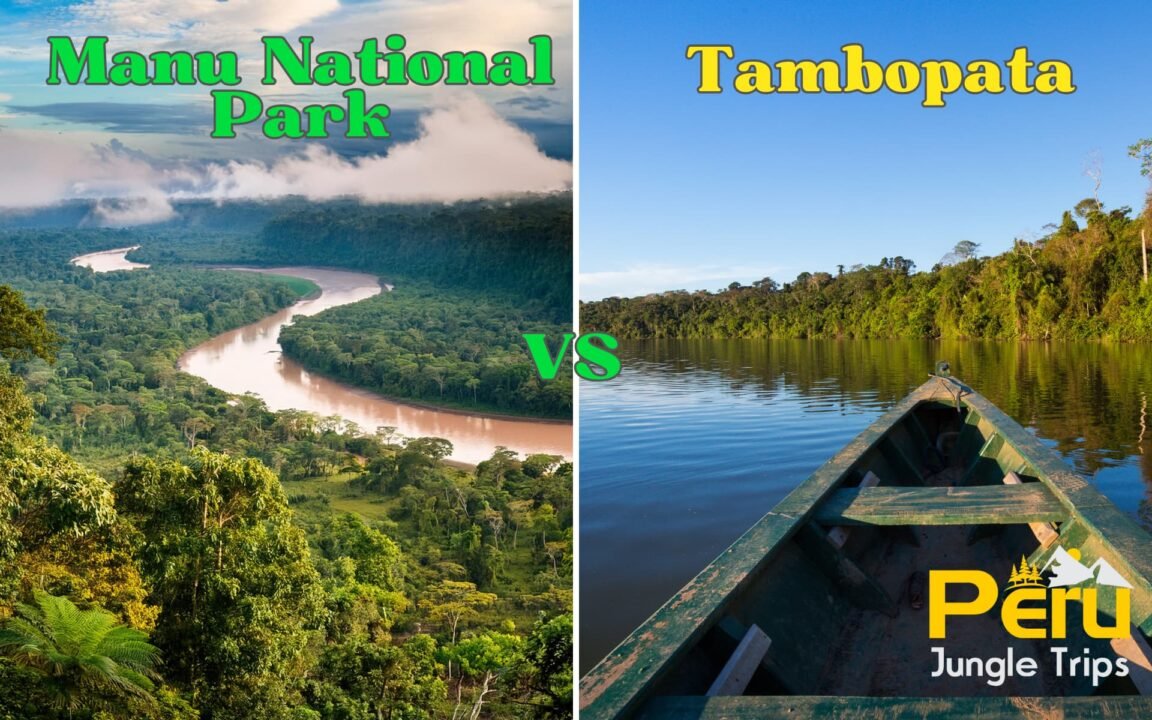Parque Nacional Manu vs Tambopata
Cuando se trata de explorar la Amazonia peruana, Manu y Tambopata son dos de los destinos más impresionantes que compiten por la atención de los viajeros. Ambos ofrecen experiencias únicas en la selva tropical, pero sus diferencias pueden marcar el rumbo de tu aventura. Mientras que el Parque Nacional del Manu es conocido por ser un paraíso remoto y virgen -ideal para quienes buscan una inmersión profunda en la naturaleza-, Tambopata destaca por su fácil acceso y una infraestructura turística más desarrollada, lo que lo convierte en una excelente opción para los viajeros con agendas más apretadas.
En este artículo, desglosamos las características distintivas de cada destino, desde los mejores servicios turísticos hasta los increíbles avistamientos de fauna salvaje, para que pueda elegir bien su viaje por el Amazonas. ¡Es hora de descubrir cuál de estos destinos te llama más!
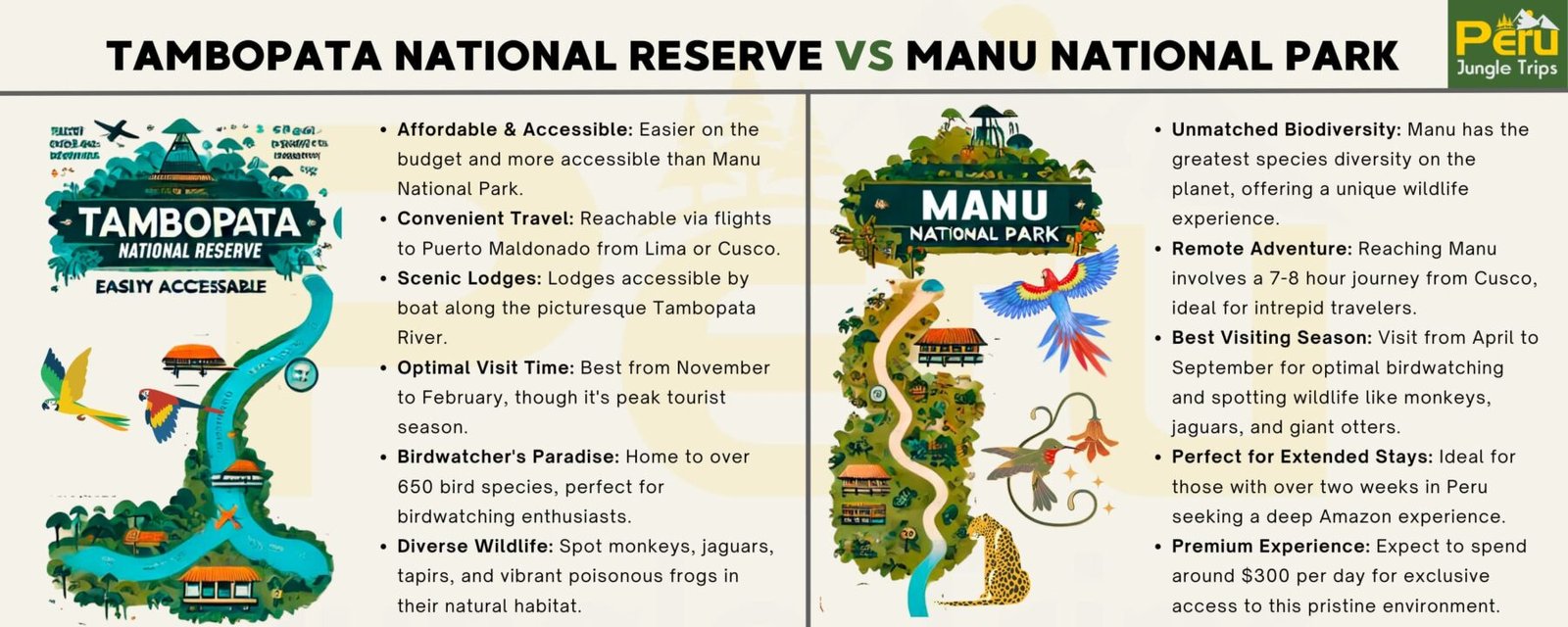
Tambopata:
- Easily accessible and less expensive than Manu National Park.
- It can be reached by flying into Puerto Maldonado from Lima or Cusco.
- The lodges are accessible by boat along the Tambopata River.
- Best time to visit from November to February, but increased tourism can make it difficult to spot a wide variety of wildlife.
- Tambopata is a popular destination for birdwatching, with over 650 species reported.
- It’s also home to monkeys, jaguars, tapirs, and poisonous frogs.
Manu:
- Manu is considered to have the greatest species diversity in the world.
- Getting there is challenging due to the lack of flights and the 7-8 hour journey from Cusco.
- The best time to visit is from April to September, and it’s a great place for birdwatching and spotting various wildlife such as monkeys, jaguars, and giant otters.
- The park is recommended for travelers staying in Peru for more than two weeks and can be costly, with expectations of spending around $300 per day.
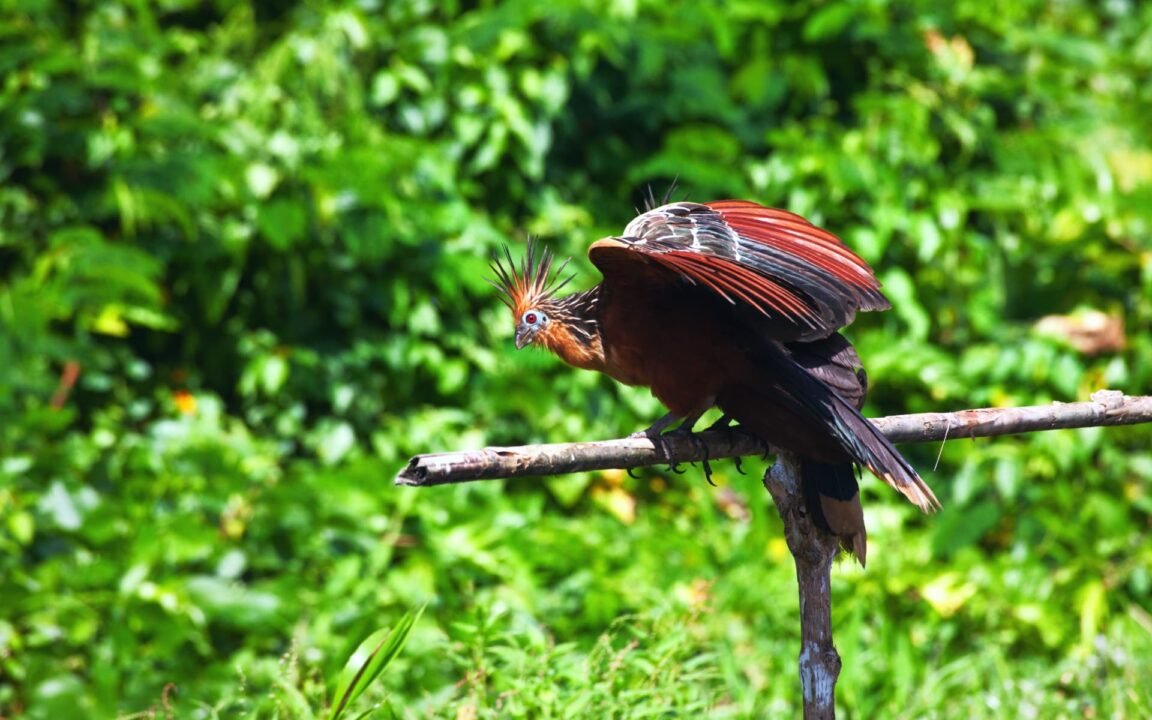
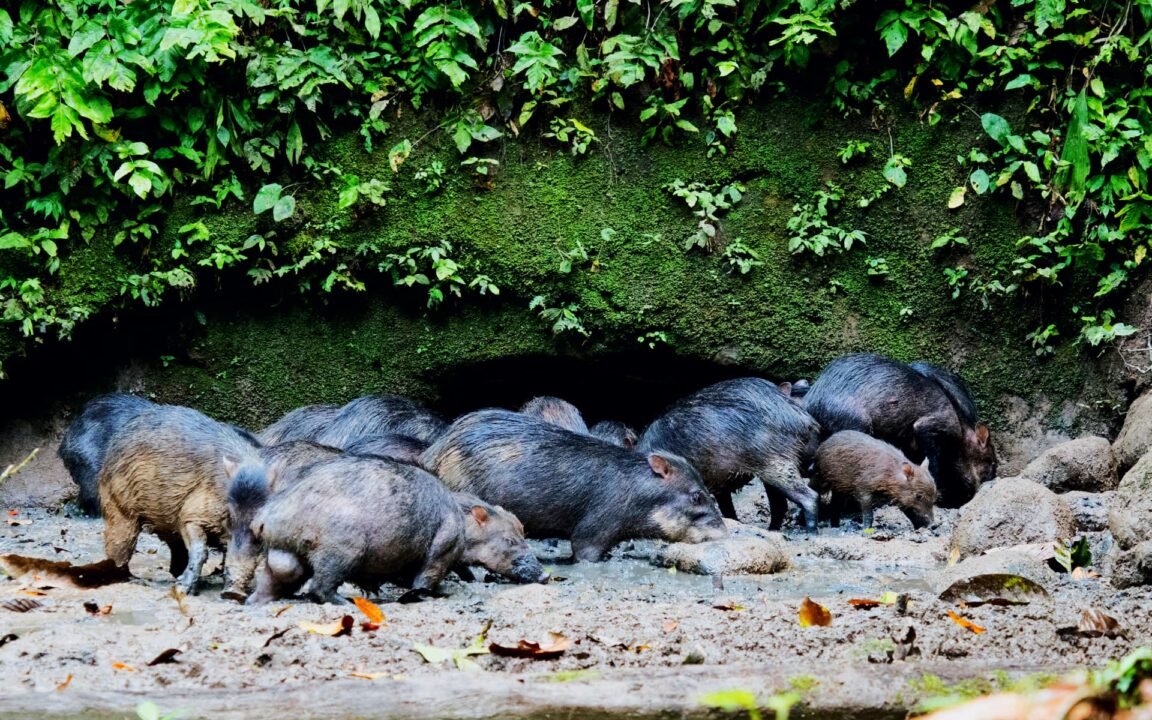
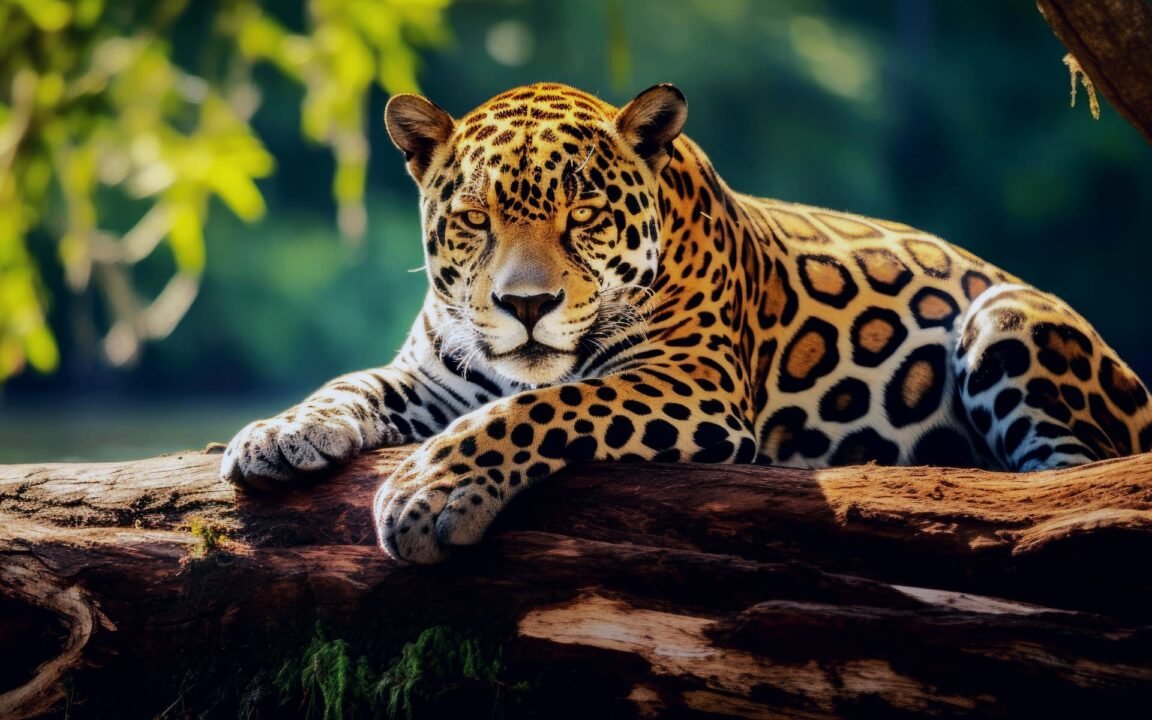

Tambopata National Park is especially well-known for birdwatching expeditions, with over 650 bird species reported to have been seen. This includes the Harpy Eagle, Macaws, and Parrots. Monkeys, jaguars, Amazonian tapirs, and poisonous frogs live there as well.
Because the exploration of the wildlife can be completed in 3–4 days, Tambopata is recommended for travelers who are in Peru for a short vacation. It is also less expensive, with only about $100 spent per day.
Manu National Park
Manu National Park is Peru’s largest and most sheltered region. Many people believe it has the greatest species diversity in the world!
However, getting to the national park is difficult because there are no flights. Instead, tourists must travel to the village of Paucartambo and then to the Amazon Basin, which is a 7-8-hour journey from Cusco.
This means that Manu National Park’s natural way of life is not disturbed. The best time to visit Manu National Park is from April to September.
It’s also a great place to go birdwatching, with over 850 bird species, including macaws. You can also spot monkeys, jaguars, pumas, giant otters, giant armadillos, and the Andean Mountain cat.
As a result, Manu National Park is recommended for travelers staying in Peru for more than two weeks, as wildlife explorations can take 9-10 days. For researchers, nature enthusiasts, and biologists, it can be an exciting experience. However, it can be costly, as you can expect to spend around $300 per day.
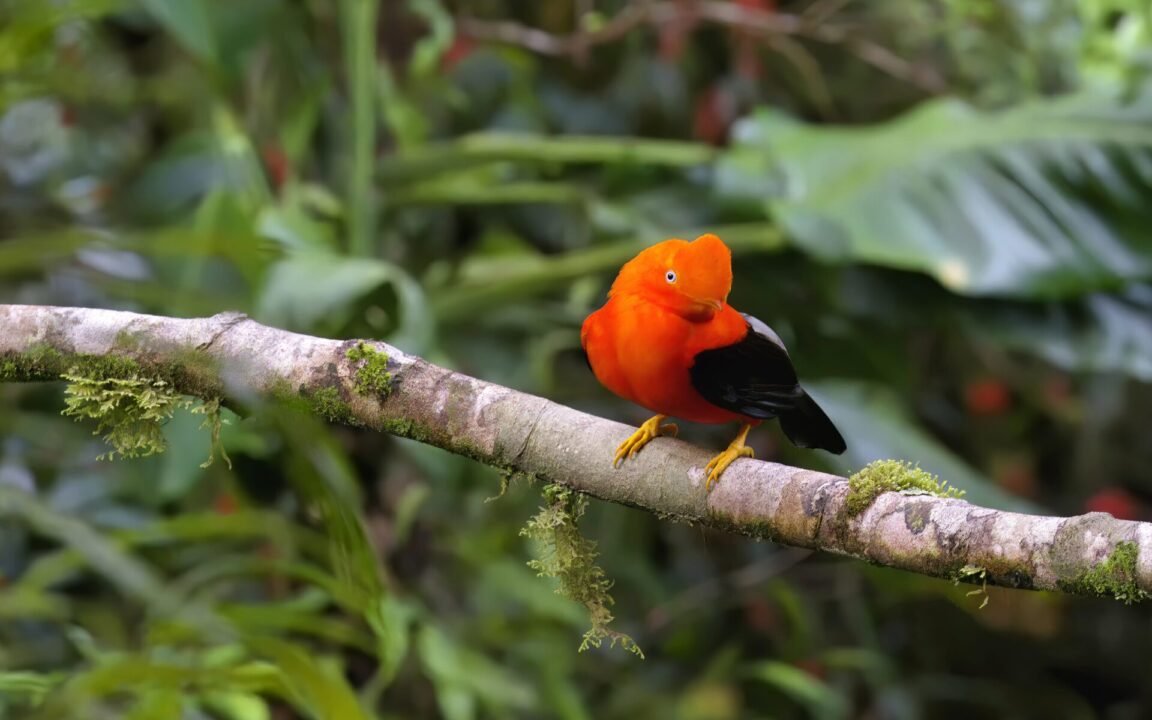
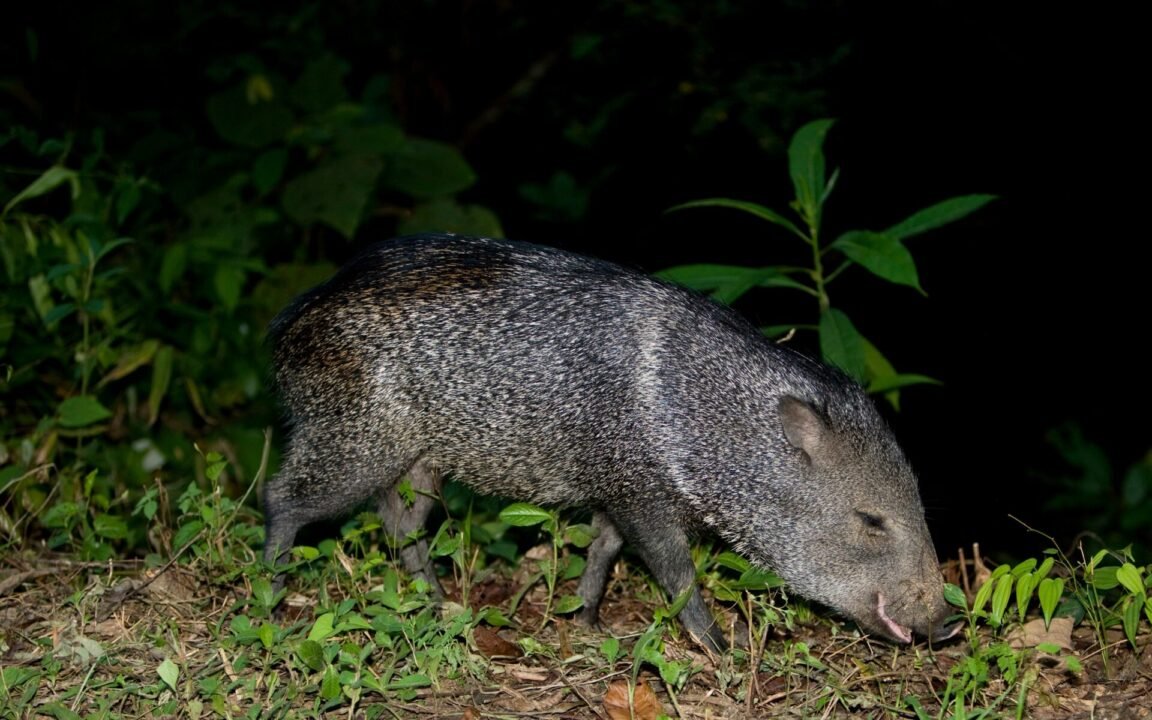
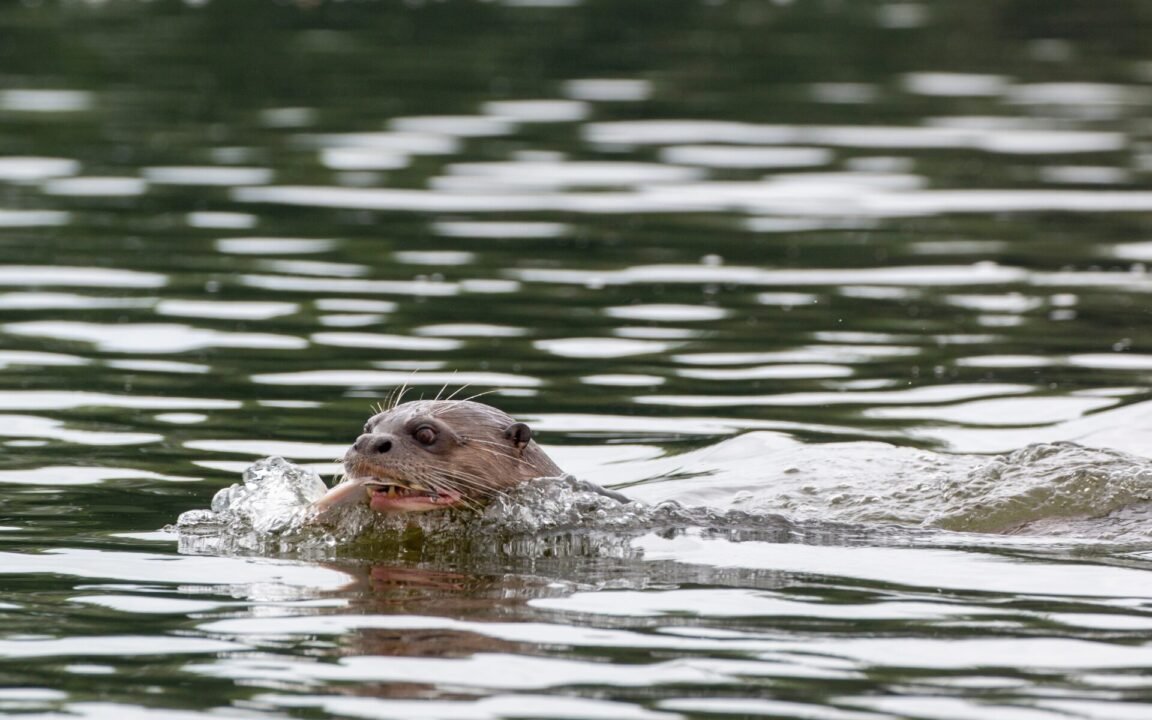
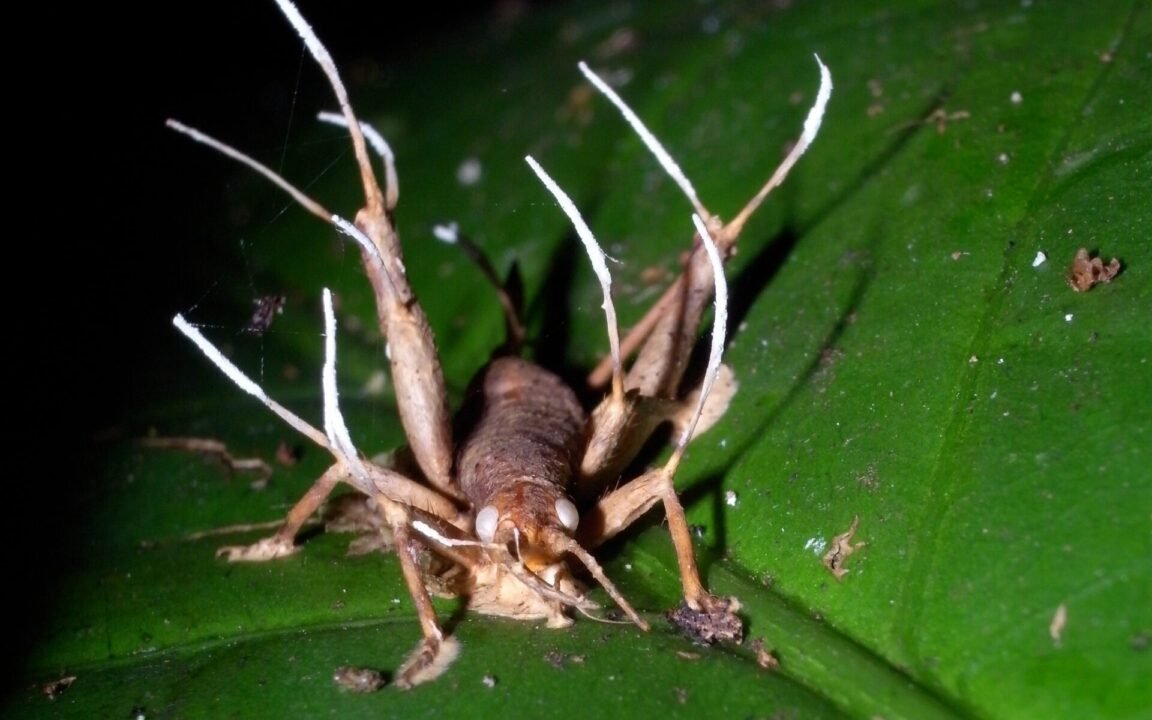
Conclusion
So, which option is the best? Is it Manu National Park or Tambopata?
Whether you visit Manu National Park or Tambopata, the Peruvian Amazon rainforest will provide you with an unforgettable wildlife experience. It depends completely on whether you want to spend 3-4 days or more than a week exploring the Peruvian jungle, as well as the time of year you plan to visit Peru.
Animals that are frequently seen include monkeys, birds, and giant otters. Jaguars, pumas, and Andean Mountain cats are extremely rare. So don’t get your hopes up about this one. And consider yourself incredibly lucky if you come across one!


